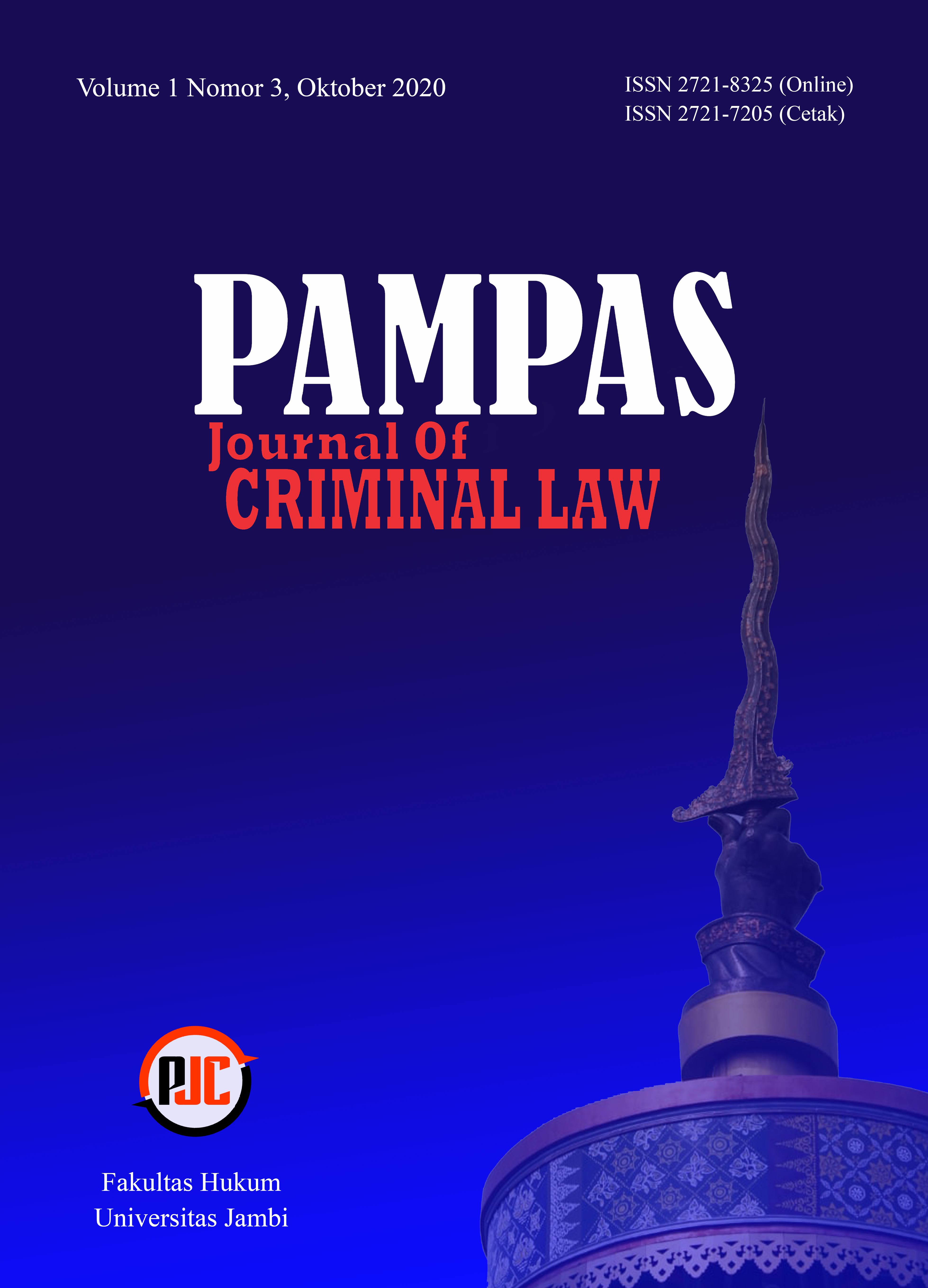Sidik Jari sebagai Pendukung Alat Bukti dalam Proses Penyidikan Perkara Pidana
Main Article Content
Abstract
ABSTRAK
Tujuan penelitian ini adalah untuk mengetahui penggunaan sidik jari bisa mendukung proses pembuktian alat bukti dalam proses penyidikan perkara pidana di Polda Jambi serta untuk mengetahui efektivitas sidik jari sebagai pendukung alat bukti dalam proses penyidikan perkara pidana. Banyaknya kasus kejahatan yang terjadi di Jambi membuat pihak kepolisian semakin meningkatkan kinerjanya yang salah satunya ialah dalam proses penyidikan dengan mencari bukti petunjuk yang salah satunya sidik jari. Hasil penelitian ini adalah penggunaan sidik jari bisa mendukung proses pembuktian alat bukti dalam proses penyidikan perkara pidana, karena dengan ditemukannya sidik jari seseorang yang diduga melakukan tindak pidana maka akan memudahkan pihak kepolisian dalam mencari bukti lain, untuk di Jambi sendiri penggunaan sidik jari sebagai bukti awal jarang dilakukan terlihat dari tahun 2016-2019 hanya terdapat 5 kasus yang menggunakan sidik jari sebagai petunjuk awal, karena di Jambi sendiri masih memiliki banyak kekurangan seperti pada saat olah TKP banyak ditemukan sidik jari akan tetapi banyak yang sudah rusak, dan banyak kejadian tindak pidana yang tidak langsung dilaporkan, untuk efektivitasnya sendiri Polda Jambi memiliki peralatan yang sangat lengkap dan canggih sudah seperti di Mabes Polri dan sangat efektif dari segi kasus dan alatnya bahwa dari 5 kasus yang terjadi semuanya efektif dengan menggunakan sidik jari sebagai alat bukti petunjuk awal.
ABSTRACT
The purpose of this study was to determine the use of fingerprints to support the process of proving evidence in the investigation of criminal cases in the Jambi Regional Police and to determine the effectiveness of fingerprints as supporting evidence in the investigation of criminal cases. The number of criminal cases that occurred in Jambi made the police improve their performance, one of which was in the investigation process by looking for evidence of evidence, one of which was a fingerprint. The results of this study are the use of fingerprints can support the process of proving evidence in the investigation of criminal cases, because the discovery of fingerprints of someone suspected of committing a crime will make it easier for the police to find other evidence, for in Jambi itself the use of fingerprints as preliminary evidence rarely seen from 2016-2019, there were only 5 cases that used fingerprints as an initial guide, because in Jambi itself still had many shortcomings such as at the time of the crime scene many fingerprints were found but many were already damaged, and many criminal acts were indirectly reported, for its own effectiveness the Jambi Regional Police have very complete and sophisticated equipment such as those at the National Police Headquarters and are very effective in terms of cases and tools that all 5 cases that occurred were effective using fingerprints as evidence for initial instructions.
Downloads
Article Details

This work is licensed under a Creative Commons Attribution 4.0 International License.
This work is licensed under Creative Commons Attribution 4.0 International License. All writings published in this journal are personal views of the authors and do not represent the views of this journal and the author's affiliated institutions. Author(s) retain copyrights under the licence of Creative Commons 4.0 International (CC BY 4.0).
References
ABSTRACT
The purpose of this study was to determine the use of fingerprints to support the process of proving evidence in the investigation of criminal cases in the Jambi Regional Police and to determine the effectiveness of fingerprints as supporting evidence in the investigation of criminal cases. The number of criminal cases that occurred in Jambi made the police improve their performance, one of which was in the investigation process by looking for evidence of evidence, one of which was a fingerprint. The results of this study are the use of fingerprints can support the process of proving evidence in the investigation of criminal cases, because the discovery of fingerprints of someone suspected of committing a crime will make it easier for the police to find other evidence, for in Jambi itself the use of fingerprints as preliminary evidence rarely seen from 2016-2019, there were only 5 cases that used fingerprints as an initial guide, because in Jambi itself still had many shortcomings such as at the time of the crime scene many fingerprints were found but many were already damaged, and many criminal acts were indirectly reported, for its own effectiveness the Jambi Regional Police have very complete and sophisticated equipment such as those at the National Police Headquarters and are very effective in terms of cases and tools that all 5 cases that occurred were effective using fingerprints as evidence for initial instructions.
